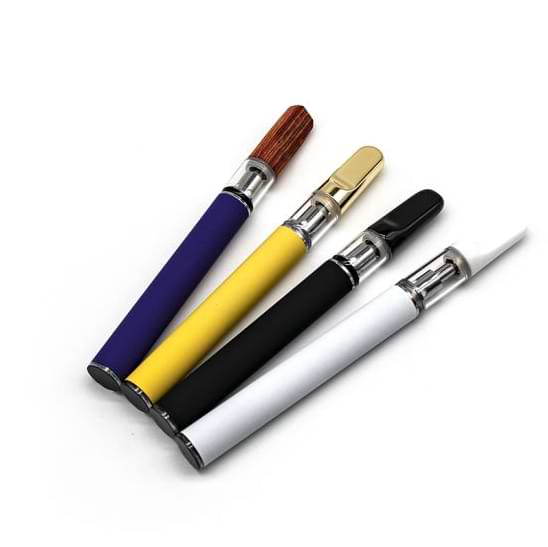
Rechargeable vapes, also known as vape pens or e-cigarettes, are electronic devices that vaporize a liquid solution known as e-liquid or vape juice. These devices typically consist of a battery, a heating element, and a tank or cartridge that holds the e-liquid.
When a user inhales from the device, the battery powers the heating element, which heats up the e-liquid and turns it into a vapor that can be inhaled. Rechargeable vapes are designed to be reusable and can be charged via a USB cable or other charging method.
One of the main advantages of rechargeable vapes is that they are often more cost-effective than disposable vapes, as users can simply replace the e-liquid and recharge the battery rather than having to purchase a new device each time. Additionally, many users find that rechargeable vapes offer a more customizable and enjoyable experience, as they can choose from a wide variety of e-liquid flavors and nicotine strengths to suit their preferences.
A Quick History of Rechargeable Vapes
The history of rechargeable vapes dates back to the early 2000s when Chinese pharmacist Hon Lik invented the modern e-cigarette as a smoking cessation aid. Lik was a smoker himself and had lost his father to lung cancer, which motivated him to develop an alternative to traditional cigarettes. The first commercially available rechargeable vape was introduced in China in 2004, and the technology quickly spread to other parts of the world.
In the years that followed, rechargeable vapes became increasingly popular among smokers looking to quit or reduce their tobacco consumption. By the early 2010s, the market for rechargeable vapes had expanded to include a wide range of devices and e-liquid flavors, and vaping had become a popular alternative to smoking in many parts of the world.
Some examples of early rechargeable vape devices include the Ruyan e-cigarette, which was first introduced in China in 2004, and the Joyetech eGo, which was launched in 2009 and became one of the most popular rechargeable vape devices of its time. Today, there are countless different types of rechargeable vapes available, ranging from simple pod systems to high-powered mods designed for advanced users.
It is worth noting that while rechargeable vapes were invented in China, the technology has since spread to other parts of the world, and there are now many different manufacturers and brands of rechargeable vapes available from all over the globe.
A Wide Variety of Rechargeable Vapes
Rechargeable vapes have become increasingly popular in recent years as an alternative to traditional cigarettes. There are several different types of rechargeable vapes available on the market today, each with its own unique features and benefits. From small and portable pod systems to powerful mods for experienced users, there is a rechargeable vape to suit just about any vaping style or preference. Whether you are new to vaping or an experienced user, choosing the right type of rechargeable vape can help you enjoy a more customizable and enjoyable vaping experience.
Some of the most common types include:
Pod Systems: These are small, compact devices that use pre-filled or refillable pods to hold the e-liquid. They’re simple to operate and need little upkeep.
Vape Pens: These are longer, pen-shaped devices that typically have a larger battery and tank than pod systems. They may be designed for use with pre-filled or refillable tanks.
Mods: These are larger, more advanced devices that are designed for experienced users. They typically have a larger battery, a more powerful heating element, and can be used with a wide range of tanks and atomizers.
All-in-One (AIO) Devices: These are hybrid devices that combine the features of pod systems and vape pens. They typically have a built-in tank and a compact design.
Disposable Vapes: These are single-use devices that come pre-filled with e-liquid and do not require charging or refilling. While they are convenient, they can be more expensive in the long run than rechargeable vapes.
Ultimately, the type of rechargeable vape that is best for you will depend on your personal preferences and vaping habits. It is important to choose a device that is easy to use, reliable and meets your individual needs.
A comparison table outlining some of the main differences between rechargeable vapes, tobacco, vape oil, and hookah:
|
Category |
Rechargeable Vapes | Tobacco | Vape Oils |
Hookah |
| Inhalation |
Vapor |
Smoke | Vapor |
Smoke |
| Nicotine |
Can contain nicotine |
Contains nicotine | Can contain nicotine |
Can contain nicotine |
| Combustion |
No combustion |
Combustion | No combustion |
Combustion |
| Chemicals |
Contains fewer chemicals |
Contains a large number of chemicals, including tar and carbon monoxide | Contains fewer chemicals |
Contains a large number of chemicals, including carbon monoxide and heavy metals |
| Flavor |
Wide range of flavors is available |
Flavor varies depending on the type of tobacco used | Wide range of flavors is available |
Wide range of flavors is available |
| Health Risks |
Long-term health effects are still being studied |
Smoking tobacco is associated with a wide range of health risks, including cancer, heart disease, and respiratory problems | Long-term health effects are still being studied |
Smoking hookah is associated with many of the same health risks as smoking tobacco, including cancer and respiratory problems |
| Cost |
Can be more cost-effective in the long run than smoking tobacco |
Can be expensive, particularly in areas with high tobacco taxes | Can be expensive, particularly for high-quality oils |
Can be expensive, particularly for high-quality hookah tobacco |
It is worth noting that while rechargeable vapes may be a less harmful alternative to smoking tobacco or hookah, they are not without risk, particularly for young people and non-smokers. It is important to use rechargeable vapes responsibly and in accordance with manufacturer instructions and to consider the potential risks and benefits before using any type of vaping product.





